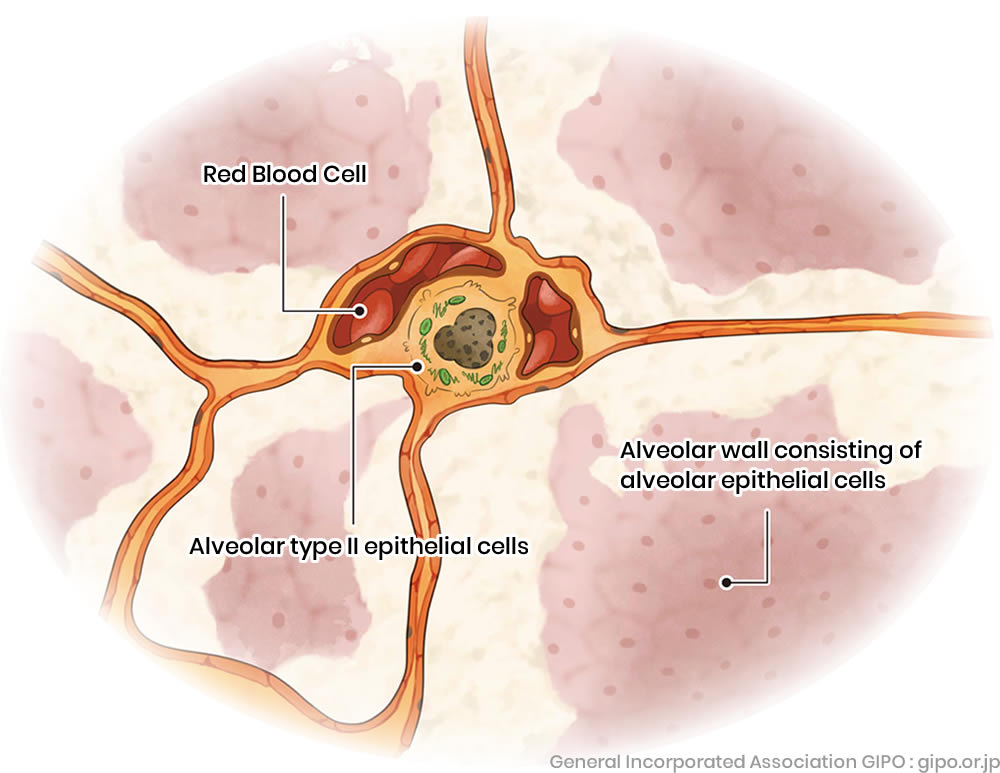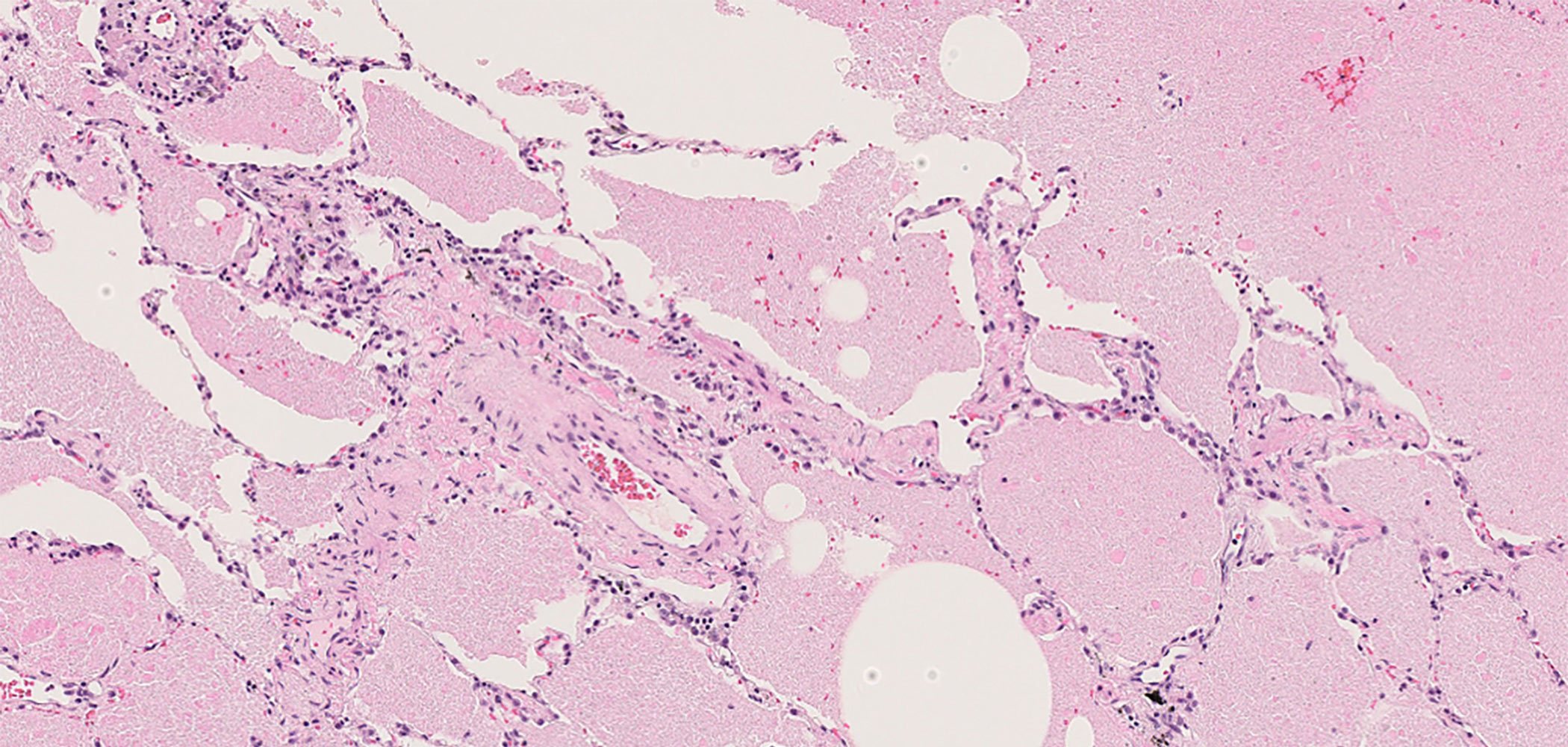What kind of disease is pulmonary alveolar proteinosis?
Pulmonary alveolar proteinosis is a disease in which waste products consisting of proteins, phospholipids, and cholesterol are abnormally accumulated in small sacs called alveoli that extend deep into the bronchioles, making it difficult for oxygen from the air to be taken into the blood.
To aid understanding, a description of the structure of the lungs and the mechanism of breathing is provided below.
The structure of the lungs
The lungs are important organs that take oxygen from the air into the blood and expel the carbon dioxide gas produced in the body. Air enters through the nose or mouth and passes through the trachea, which divides into the left and right bronchi in the middle of the chest.
Each of these then divides repeatedly; the air finally reaches the alveoli, which are about 200 microns (0.2 mm) in diameter. As shown in the figure, the alveoli are surrounded by countless capillaries, and oxygen from the air that enters the alveoli passes through the thin walls of the alveoli and into the capillaries.
The thin walls of the alveoli are elastic, like rubber balls, and expand and contract as air moves in and out. The source of this elasticity is the surface tension of a mucus called a "surfactant" that coats the inside of the alveoli. Without this surface tension, the alveoli cannot expand, making it impossible to breathe properly.

Surfactant is produced by cells called type II epithelium, which protrude from the inside of the alveoli and is released into the alveoli.
Meanwhile, surfactant is taken up by cells called alveolar macrophages, which patrol the alveoli and glide over the surfactant, which is broken down and digested. The production and decomposition of surfactant are perfectly balanced in the lungs of healthy people, and surfactant is present in sufficient amounts to coat the inside of the alveoli.
 Image of surfactant accumulation
Image of surfactant accumulation(Imaginary view of the alveoli of a patient with alveolar proteinosis)
The pale cream color is surfactant
However, if protein and lipid waste products, including surfactant, accumulate abnormally in the alveoli for some reason, pulmonary alveolar proteinosis occurs. When these waste products accumulate in excess, oxygen cannot enter the blood smoothly. As the disease progresses, shortness of breath may occur, and if it progresses further, a condition called respiratory failure may occur, requiring home oxygen therapy.

Reasons for the accumulation of waste products, including surfactant, in the alveoli
Excessive accumulation of waste products, including surfactant, is caused by abnormalities in the surfactant itself and abnormalities in the alveolar macrophages. It is known that most alveolar proteinosis is caused by abnormalities in alveolar macrophages.
Proportion of Cases
- Autoimmune pulmonary alveolar proteinosis
- Autoimmune pulmonary alveolar proteinosis is a disease in which alveolar macrophages, which break down and remove waste products in the alveoli, become dysfunctional due to autoantibodies. It accounts for 92% of pulmonary alveolar proteinosis cases and is caused by antibodies called anti-GM-CSF autoantibodies.
- Secondary pulmonary alveolar proteinosis
- When alveolar macrophages that break down waste products in the alveoli are replaced by abnormal cells, a disease called secondary pulmonary alveolar proteinosis results. It accounts for 7% of alveolar proteinosis cases and is a disease that complicates blood diseases, such as myelodysplastic syndrome and leukemia.
- Hereditary pulmonary alveolar proteinosis
- In this disease, abnormal surfactant that is difficult to be broken down is produced; intracellular substance transport is abnormal; or the receptor that GM-CSF binds to, which activates alveolar macrophages, is abnormal. All of these states are associated with hereditary pulmonary alveolar proteinosis caused by genetic abnormalities. This accounts for 1% of alveolar proteinosis and is called hereditary alveolar proteinosis.

